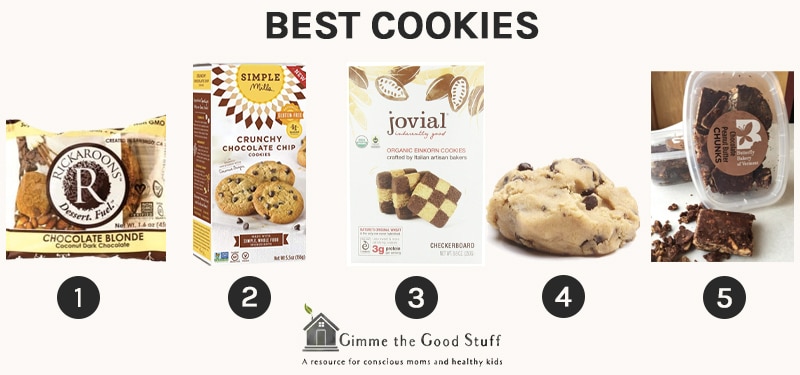
1. Rickaroons / 2. Simple Mills / 3. Jovial / 4. Cappello’s / 5. Butterfly Bakery of Vermont

Written by Suzanne, Chief Health Officer and Resident Grandmother
I like to bake cookies with high-quality, natural ingredients, so writing this guide was a challenge! I know that Maia and many of you are busy moms who don’t have time to bake, but still like to offer your kids cookies from time to time. Who doesn’t love a cookie-and-milk or cookie-and-tea break?
I don’t call most store-bought cookies Good Stuff because I’m concerned about many of the ingredients, from highly refined flours and sweeteners to heavily processed, low-quality oils and sketchy additives. (At home, I usually bake with sweeteners like maple sugar, coconut sugar, or honey. For fat, I prefer butter or coconut oil .)
My Top Pick for Healthiest Cookies
As you’ll see when you read my full review below, I am hooked on Rickaroons, and if you’re going to eat cookies, this is the brand to get.
So, in my quest to find some Good Stuff, I went to the healthy food section of my local grocery store and bought lots of brands of cookies. I evaluated them based on ingredients and, yes, taste! I found one brand I call Good Stuff, several cookies I call Okay Stuff (especially if you’re not eating them all the time), and a bunch that are Sneaky and Bad.
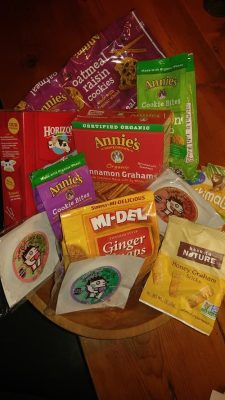
Bad Ingredients in Most Cookies
Some cookies I looked at didn’t contain a single ingredient I would call Good Stuff. But there are a few major types of ingredients that I’m most concerned about, with sweeteners and fats being at the top of my list.
Sugars
The problem with many cookies is that the sweetener is not only highly refined white sugar, but also high fructose corn syrup (HFCS). High fructose corn syrup is an industrial food product, far from a “natural” substance. HFCS is cheaper than sugar because of government subsidies and therefore it’s often a sweetener of choice in the standard cookies that you buy at the grocery store. I’m not alone in my dislike of HFCS. The Mayo Clinic says, “As use of high-fructose corn syrup has increased, so have levels of obesity and related health problems.”
Fats
My other major concern with most store-bought cookies is the type of fat used. Partially hydrogenated oils (vegetable, soybean, cottonseed, etc.) are a source of unhealthy trans fats. These oils are used widely in fried and packaged foods because they’re cheap and they greatly extend a food’s shelf life. Unfortunately, they’re really bad for us.
Trans fats raise the risk of heart disease by raising LDL (“bad cholesterol”) and lowering HDL (“good cholesterol”). Human milk contains trans fat if the breastfeeding mother consumes it; the more she eats, the higher the concentration of trans fat in her milk and in her baby’s blood. Trans fat is implicated in cancers of the breast and prostate, diabetes, infertility, Alzheimer’s, obesity (even with similar caloric intake), depression, and other maladies.
Partially hydrogenated oils have been banned in several countries (such as Denmark and Switzerland), states (California), and cities (Calgary, New York City, and others).
You’ll still find them in lots of packaged cookies!
Note: Be wary of packages that say “0g trans fats (per serving).” This does not mean that the food is trans-fat free. It just means that there is a half gram or less of trans fat per serving. (Thanks, labeling laws!) If you look at the ingredient list, you may still see partially hydrogenated oils listed. And even though the amount may be relatively small, trans fats are bad and can add up in our diets—this is especially true for kids.
Another popular fat that I’m not a fan of is canola oil. The vast majority of canola oil (if it’s not organic) comes from genetically modified rapeseed plants. Canola oil is the product of a lot of processing, involving chemicals and high temperatures that can compromise the fatty acids, even hydrogenating some. Health researcher and author Sally Fallon calls canola oil a “newfangled fat” because it’s only been part of our food system since the 1970s. I don’t know about you, but I don’t like being a guinea pig, so I avoid canola oil.
Of course there are more cookie ingredients that raise red flags for me. You’ll see more below in the Okay Stuff, Sneaky Stuff, and Bad Stuff.
So Are There Good Cookies?
Short answer: Yes!
Cookies can be Good Stuff, but should be enjoyed as a special treat. You already know that I’m biased in favor of cookies made at home with high-quality, wholesome ingredients (here are my favorites, but you don’t have to come to my house to get Good Stuff cookies. I did find some store-bought cookies that I call Good Stuff and Okay Stuff.
(You’ll notice in this post that I’ve linked a bunch of ingredients to Thrive Market. Thrive is a Costco-meets-Whole-Foods-meets-Amazon model, with hard-to-find healthful foods delivered, for free, at steeply discounted prices.)
The Good Stuff
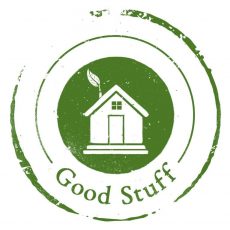
The bad news is that there’s only one type of packaged cookie that I’ve found to be Good Stuff. The good news is that I have found other Good Stuff cookies that are made locally and sold at my town’s health food store. You might be able to find some, too. Look for whole grains/flours, good fats (like butter and coconut oil), unrefined sweeteners (like coconut palm nectar, molasses, maple syrup, or honey), and generally short lists of ingredients.
Butterfly Bakery of Vermont Chocolate Peanut Butter Chunks Okay, so these aren’t exactly cookies, but they do the trick, and don’t have sugar! When Maia is craving a Snickers Bar, and a Lara Bar just isn’t going to cut it, she reaches for these organic chocolate peanut butter bars, which are handmade in Vermont and sweetened with just pure maple syrup.
The ingredients are simple: all you’ll find is maple-sweetened granola, organic flax seeds, natural peanut butter, and organic chocolate.
$9.99Buy Now
Rickaroons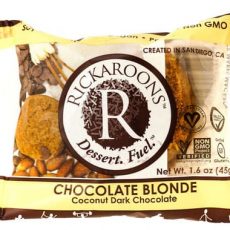 are the one type of store-bought cookie that I highly recommend. The company calls them “energy bars that taste like dessert.” Aside from being delicious, Rickaroons are made from the kind of healthy, wholesome ingredients that I would use in my own kitchen. They’re organic, vegan, gluten free, Paleo friendly, and sweetened with coconut palm nectar. Rickaroons come in several flavors– Megaroon, Chocolate Blonde, Mint To Be, Mocha, and seasonal varieties. The only downside: all flavors of Rickaroons contain dark chocolate or cocao nibs, both of which contain small amounts of caffeine.
are the one type of store-bought cookie that I highly recommend. The company calls them “energy bars that taste like dessert.” Aside from being delicious, Rickaroons are made from the kind of healthy, wholesome ingredients that I would use in my own kitchen. They’re organic, vegan, gluten free, Paleo friendly, and sweetened with coconut palm nectar. Rickaroons come in several flavors– Megaroon, Chocolate Blonde, Mint To Be, Mocha, and seasonal varieties. The only downside: all flavors of Rickaroons contain dark chocolate or cocao nibs, both of which contain small amounts of caffeine.
The Okay Stuff
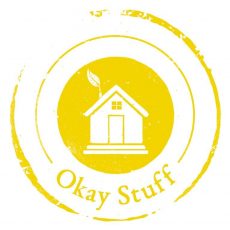
Annie’s Cookie Bites are my favorite cookies from Annie’s because they are small and the serving size is 6-7 cookies. I tried Lemon Drop, Oatmeal, and Chocolate Chip flavors. They are all tasty and sweet (7-8 grams of sugar per serving). The ingredients in Annie’s Cookie Bites are organic except for the fats, which are palm and sunflower oil. The first ingredient is wheat flour (which means white unless it says whole wheat) and the second ingredient is organic cane sugar. They all have whole grain, either oats or whole wheat further down the ingredient list. Each package says, “4 g of whole grain per serving.” I would probably choose the Oatmeal (although it looks like the oatmeal bites are not available) because they not only have whole grain flour but also whole oats. I thought the Lemon Drops were the tastiest, but for kids I liked the Oatmeal.
We love s’mores in the spring and fall when we have fires outside (we use these marshmallows with no corn syrup or other questionable ingredients), so I had to review Annie’s Cinnamon Grahams. They have 8g of whole grains and 9 grams of sugar per serving (two full cracker sheets). I like that they have whole grain wheat flour and honey and molasses. They are much better than traditional graham crackers from companies like Nabisco and Honey Maid.
Barbara’s Snackimals come in cute little packages. Kids love them because of the animal shapes, and as I discovered, they are very tasty! I chose the Oatmeal variety because the first ingredient is organic whole oats. They have 6 grams of sugar per 10 cookies and probably 20 cookies in the bag. Good luck getting your kids to eat only half a bag!
I have been eating MI-DEL Ginger Snaps for years. They were the only remotely healthy cookies I could buy a few decades ago when I started looking for food that didn’t have trans fats. I fell for the advertising about the Swedish-style, old-world recipe, and the fact that the flour and sugar are organic. Plus, they’re delicious, crunchy and gingery. But alas, they are not really that healthful. They have no whole grains, the fat is canola oil, and there are 12 grams of sugar per serving of five cookies. They are far better than most cookies you’ll see at the grocery store, but from the health perspective, I would choose other Okay Stuff (or Good Stuff).
The Sneaky Stuff

Horizon Cinnamon Grahams get points for being organic. But because they contain soy lecithin, a widely used and controversial additive, I would choose Annie’s Cinnamon Grahams instead.
I wanted to like Back to Nature Honey Graham Sticks because I am a “back to nature hippie” from the 1970s. Back to Nature makes several types of cookies, and I was surprised that none of their ingredients are organic. This means that their cookies contain pesticides, GMOs, and who knows what else. One small pouch has 8 grams of sugar, but I give them some points for the fact that they use honey and brown rice syrup rather than more refined sweeteners.
Newman-O’s from Newmans Own Organics are a hit with my grandsons, and I’ve been a fan of the company (and Paul Newman himself) for a long time. But they’re basically Oreos made with processed organic ingredients like white flour, refined white sugar, and palm and sunflower oils. They’re better than Nabisco’s Oreos, but not much.
Alternative Baking Company makes vegan cookies. I was prepared to like them because my friends who own a health food store told me to check them out, and they are definitely delicious. However, these cookies are big and full of sugar. One cookie—two servings—has 24-38 grams of sugar; that’s 6-8.5 teaspoons of sugar per cookie! I like that they use unrefined cane sugar, but that’s still a lot of sugar! Also, not every ingredient they use is organic, and their ingredient lists are long. I call these cookies Sneaky Stuff because the packaging promotes vegan diets as having a profoundly positive impact on your health. I don’t think eating a cookie with that much sugar and unbleached wheat flour is good for you. If you still want to try them, go ahead, but plan to share the cookie, and perhaps choose the Peanut Butter or Oatmeal to slow down the sugar rush!
The Bad Stuff
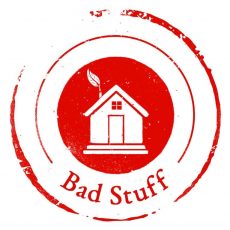
Sorry, but you knew that Nabisco Oreo Cookies would be on the Bad Stuff list! Oreos are sweetened with high fructose corn syrup, and the fats in Oreos are palm oil and canola oil.
Nabisco Chips Ahoy cookies contain Bad Stuff like white sugar, high fructose corn syrup, and partially hydrogenated cottonseed oil.
Pepperidge Farm Milano Cookies don’t contain high fructose corn syrup, but they are Bad Stuff thanks to the fats– hydrogenated vegetable oils and “interesterified soybean oil,” a new fat that I hadn’t seen before. According to Dr. Mercola, interesterified fats are being used by some manufacturers to replace trans fats. These oils are highly processed and we don’t fully know health effects, but early studies show similar risks as trans fats.
Keebler Fudge Stripe and E.L. Fudge Elfwich are both Bad Stuff. The Fudge Stripe has partially hydrogenated palm oil and high fructose corn syrup, and the E. L. Fudge Elfwich has high fructose corn syrup and TBHQ, a food additive which studies show increases the incidence of tumors in rats.
Stauffer’s Animal Crackers don’t contain trans fats, but they are sweetened with high fructose corn syrup and white sugar. They also contain white flour and soy lecithin.
Nabisco Honey Maid Teddy Grahams are some of the least concerning cookies made by Nabisco because they don’t contain trans fats or high fructose corn syrup. However, they are very sweet, thanks to white sugar, honey, dextrose, and maltodextrin. With the exception of the honey, all of these sugars are highly processed.
To your health,

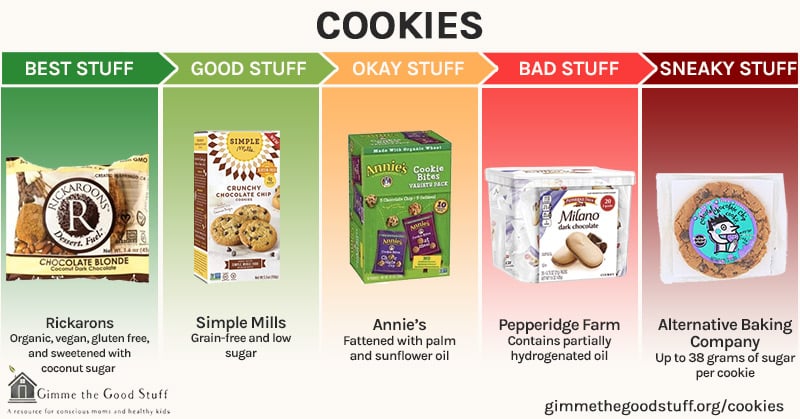
If you liked this post, sign up for our newsletter to be alerted when we publish new content like this!

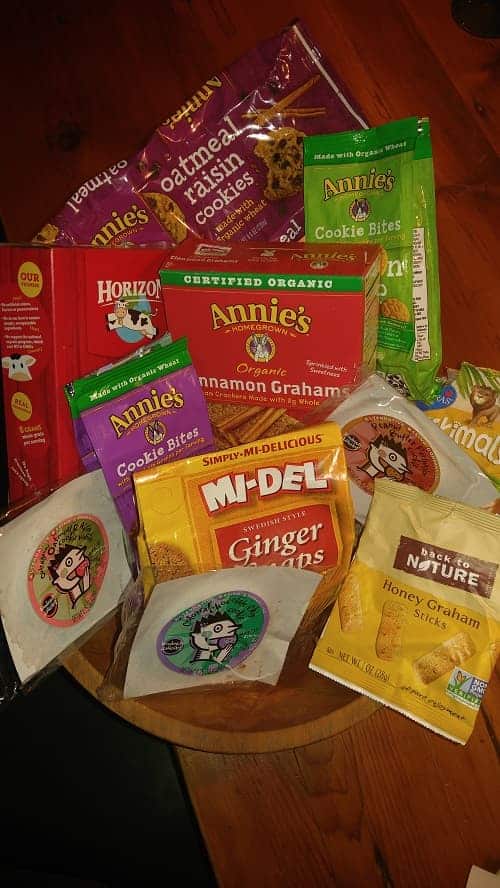

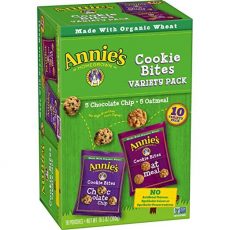

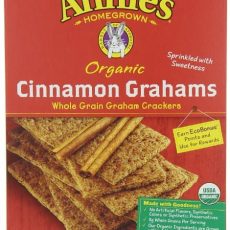

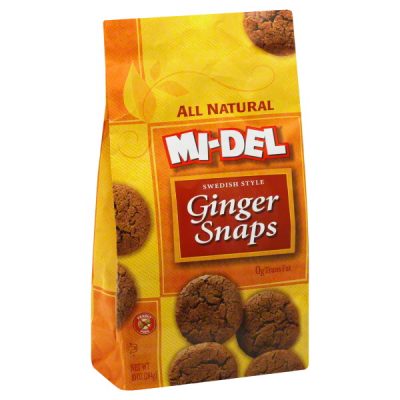
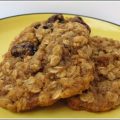
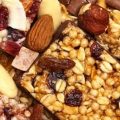

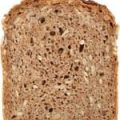
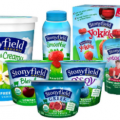

Rick Davis says
Does the “local” store have a website? Thanks for the tips.
Suzanne Weaver-Goss says
I did not list a website for a local store because everybody’s “local” is different. My local is http://www.lemonstreetmarket.com
Tracy Graziano says
We recently went on a mission trying to find cookies without palm oil. As you may be aware, palm oil is the major culprit for habitat destruction in many rainforests throughout the world and is THE reason why we may lose orangoutangs in the wild. After looking at many many brands of cookies, I got rather dizzy reading the ingredients lists in the stores and decided no more store bought cookies for us.
There is much more to “good stuff” than just the ingredients–we also have to consider how our actions can impact the world around us and therefore the wellbeing of our children for the future. Can you imagine a world without wildlife?
Suzanne Weaver-Goss says
Yes I agree there is more than just our own personal health. Palm oil is a problem environmentally and for that reason not really “good stuff”. I also agree it is much better to bake your own cookies, then you can know what’s in them. I buy local flour, local butter, and local maple sugar.
Sharon Letsinger says
I just recently found these cookies and like them pretty well. What’s your opinion of them?
Bitsys Brainfood Smart Cookies, Orange Chocolate Beet, Sweet Potato Oatmeal Raisin & Zucchini Gingerbread Carrot 5 oz (Variety Pack of 3) https://www.amazon.com/dp/B0108ORPQY/ref=cm_sw_r_cp_api_t2SwybNGAY9YT
Suzanne says
Hi Sharon,
I haven’t ever seen this brand. They have some “Good Stuff” and they are organic. The second ingredient is brown sugar so I wouldn’t recommend them as an everyday food. Also, the fat is palm shortening which has some issues. Certainly better than cookies that aren’t organic and ones that contain sugar without any “Good Stuff”.
Lauren says
Could you take a look at the Costco animal crackers and let me know how bad they are? Thx!